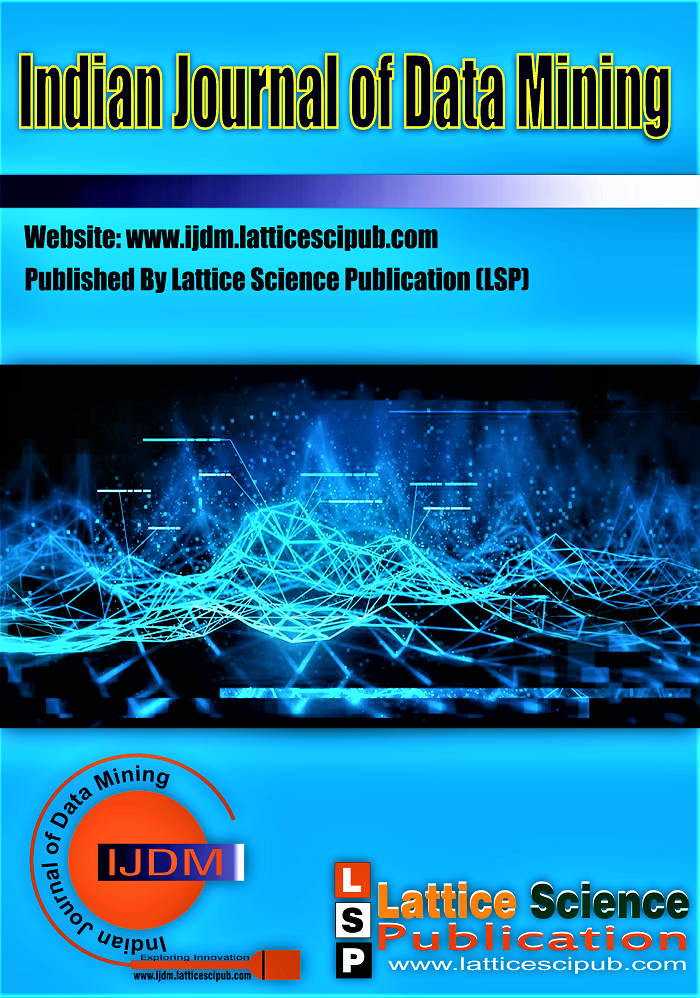Sign Language to Text Conversion using CNN
Main Article Content
Abstract
Sign language is a communication strategy used by those who are unable to hear. So those people who know sign language can communicate with people who are deaf. But a majority of our people don’t know sign language therefore there comes a communication gap between the ones who know sign language and others who don’t know. This project’s major purpose is to bridge this gap by developing a system that recognizes multiple sign languages and translates them into text in real-time. We use machine learning technologies to construct this system especially, convolutional neural networks (cnns), which are used to recognize and translate American Sign Language (ASL) into text by capturing it using a webcam. The transformed text is then presented on the screen by which individuals can comprehend and communicate with those who use sign language. The system’s performance is evaluated on a dataset of ASL gestures, attaining excellent accuracy and indicating its potential for practical usage in enhancing communication accessibility for the deaf and hard-of-hearing community.
Downloads
Article Details

This work is licensed under a Creative Commons Attribution-NonCommercial-NoDerivatives 4.0 International License.
How to Cite
References
Pujan Ziaie, Thomas M uller, Mary Ellen Foster, and Alois Knoll “A Na ̈ıve Bayes Munich, Dept. of Informatics VI, Robotics and Embedded Systems, Boltzmannstr. 3, DE-85748 Garching, Germany.
Mohammed Waleed Kalous, Machine recognition of Auslan signs using PowerGloves: Towards large-lexicon recognition of sign language.
Pigou L., Dieleman S., Kindermans PJ., Schrauwen B. (2015) Sign Language Recognition Using Convolutional Neural Networks. In: Agapito L., Bronstein M., Rother C. (eds) Computer Vision - ECCV 2014 Workshops. ECCV 2014. Lecture Notes in Computer Science, vol 8925. Springer, Cham
Zaki, M.M., Shaheen, S.I.: Sign language recognition using a combination of new vision based features. Pattern Recognition Letters 32(4), 572–577 (2011).
Byeongkeun Kang, Subarna Tripathi, Truong Q. Nguyen” Real-time sign language fingerspelling recognition using convolutional neural networks from depth map” 2015 3rd IAPR Asian Conference on Pattern Recognition (ACPR).
Radhamani, V., & Dalin, G. (2019). Significance of Artificial Intelligence and Machine Learning Techniques in Smart Cloud Computing: A Review. In International Journal of Soft Computing and Engineering (Vol. 9, Issue 3, pp. 1–7). https://doi.org/10.35940/ijsce.c3265.099319
Netay, I. V. (2022). Influence of Digital Fluctuations on Behavior of Neural Networks. In Indian Journal of Artificial Intelligence and Neural Networking (Vol. 3, Issue 1, pp. 1–7). https://doi.org/10.54105/ijainn.a1061.123122
A., O., & O, B. (2020). An Iris Recognition and Detection System Implementation. In International Journal of Inventive Engineering and Sciences (Vol. 5, Issue 8, pp. 8–10). https://doi.org/10.35940/ijies.h0958.025820
Kaur, J., & Gupta, N. (2019). Constructive Neural Network: A Framework. In International Journal of Engineering and Advanced Technology (Vol. 9, Issue 2, pp. 5321–5324). https://doi.org/10.35940/ijeat.b3304.129219
Magapu, H., Krishna Sai, M. R., & Goteti, B. (2024). Human Deep Neural Networks with Artificial Intelligence and Mathematical Formulas. In International Journal of Emerging Science and Engineering (Vol. 12, Issue 4, pp. 1–2). https://doi.org/10.35940/ijese.c9803.12040324





